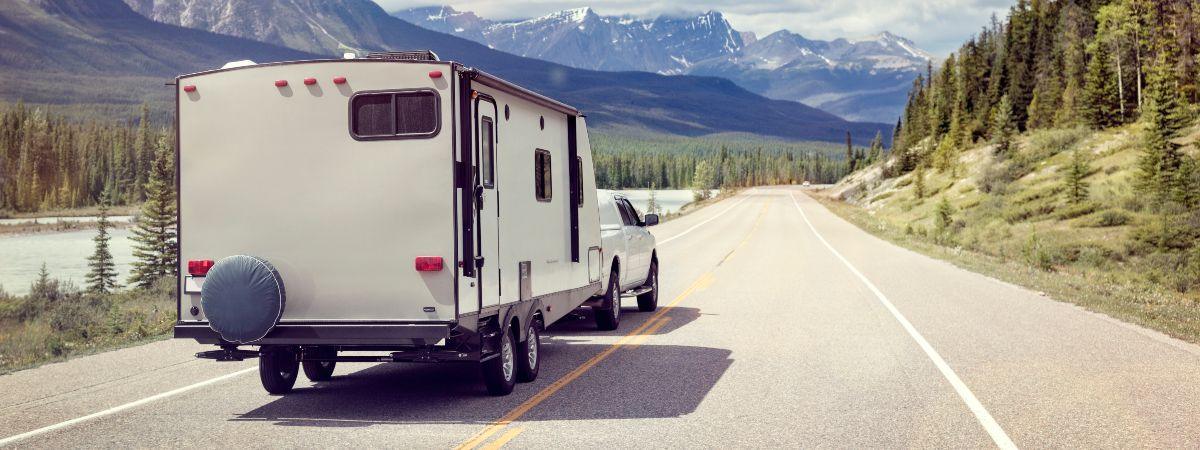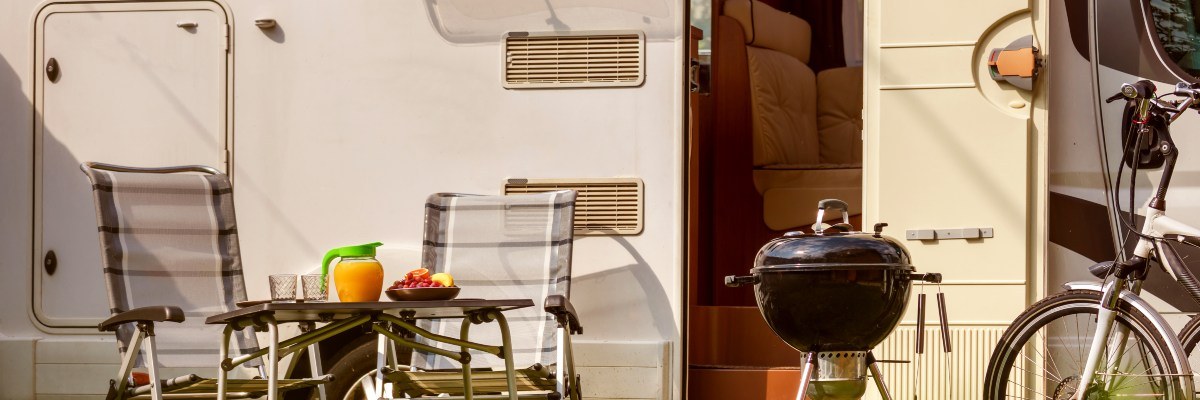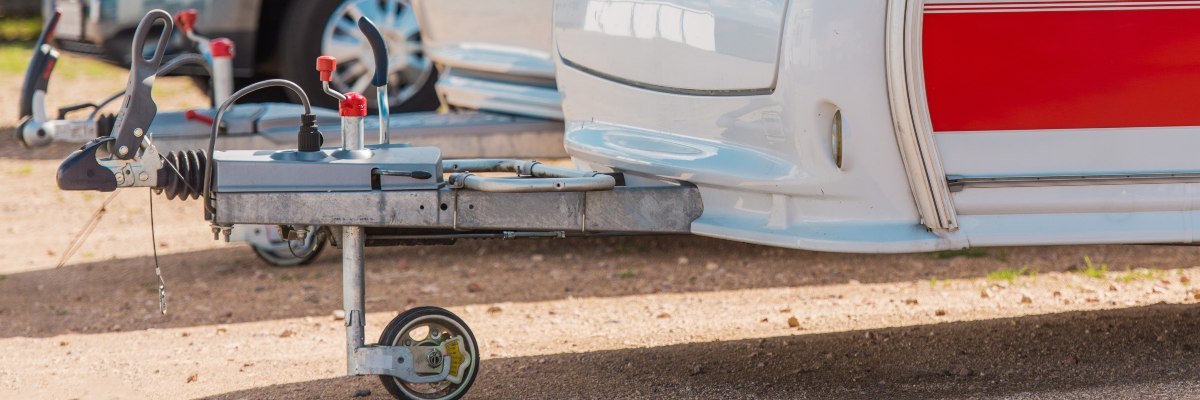
Caravan holidays are a popular choice for many families in the UK. However, if you’re new to towing the idea of towing a caravan can be quite daunting. So before you jump straight in and buy a caravan, why not take a look through our definitive guide which covers everything you need to know about towing a caravan.
Over the course of the article, we aim to answer some of these commonly asked caravan towing questions:
- What towing laws and regulations you need to be aware of?
- Do I need a caravan towing licence?
- What size caravan can I tow?
- Different towing terminology
- Do and Don’ts of towing a caravan
Caravan towing laws you should be aware of
To begin it’s important to familiarise yourself with some caravan towing laws:
- You need to hold the appropriate licence, for the outfit you plan to tow (see the section below)
- The gross train weight, i.e. the weight of the fully-loaded car plus a fully-loaded trailer, should never be exceeded
- The maximum allowed width of a towing vehicle is 2.5mm, and the maximum length of a trailer weighing up to 3,500kg is 7m (not including the A-frame)
- When towing a caravan you must use a ‘type-approved’ tow bar which meets current EU standards and has been designed for your car
- You should always fit and use towing mirrors if the caravan you plan to tow is wider than the rear of your car (you can be fined up to £1,000 and get three penalty points for towing without the correct mirrors)
- A caravan must be braked if it weighs over 750kg when fully loaded
- The caravan must display the same number plate on the caravan as the tow car
- Speed limits vary when you are towing; on a single carriageway the maximum speed you can travel is 50mph, while on a dual carriageway or motorway the maximum speed is 60mph
Do you need a caravan towing licence?
One of the most frequently asked questions from people new to towing is do they need a specific licence? Unfortunately, the answer isn’t clear cut, as it really depends on when you originally passed your driving test and the weight of the load you plan to tow.
People who passed their test prior to 1/1/97 – are generally allowed to drive a vehicle and trailer combination up to 8.25 tonnes maximum authorised mass (MAM)
People who passed their test post 1/1/97 – are allowed to drive a car or van up to 3,500kg MAM towing a trailer of up to 750kg MAM or tow a trailer over 750kg MAM, as long as the combined MAM of the trailer and the towing vehicle does not exceed 3,500kg
However, if they wish to tow anything heavier they MUST pass the car and trailer driving test, known as the B+E test. You are not required to have any lessons to pass the B+E test, however, lessons will help you familiarise yourself with best practice towing procedures.
What size caravan can you tow?
One of the most important things to get right when towing is to match your car to the caravan you plan to tow (known as outfit matching) which requires you to know your car’s towing capacity.
Towing capacity is the maximum weight a car can legally tow (when both car and caravan fully loaded) and is the starting point for choosing the right caravan for your car. The towing capacity is usually published within the car’s handbook, alternatively, you can work it out from the car’s VIN plate by deducting the number in line one from line two.
You need to bear in mind that the legal towing capacity is just that, the legal maximum limit you can tow. That doesn’t mean that is the maximum you should aim to tow. In fact, many towing experts recommend that for safe towing beginners should not tow more than 85% of the car’s kerb weight.
To work this out you need to know the kerb weight of the car and the maximum mass of the caravan. If the mass of the caravan when loaded is 85% or less of the car’s kerb weight, the car will tow it with ease. Surpassing the 85% limit can make towing more difficult and decrease the stability of the caravan when on the move.
It’s important not to buy a caravan that is too heavy (when unladen), as you may have to restrict the luggage you carry which may compromise your trip.

How packing your caravan can affect towing?
We’ve already covered how important weight can be in helping to stabilise your towing experience, but what we haven’t covered is the way in which packing your caravan can also help.
When the proper weight balance is achieved, steering is better, the caravan is less prone to snaking and is less susceptible to the suction of trucks or other large vehicles when overtaking.
The first thing to consider is that as mentioned, the loaded caravan should not be heavier than 85% of the kerb weight of the car. With this in mind, it is always best to load the car before adding weight to the caravan, putting heavier items between the car’s axles. However, if you’re heading on a family holiday and have a car full of passengers this is unlikely to be practical advice.
Instead, you can try and place heavier items in the caravan if placed correctly. The best place for heavy items in a caravan is on the ground right before the axle, with the weight of items distributed equally over both wheels.
From there you should try and keep medium weight items low down either side of the axles making sure you don’t overload the back of the caravan which can cause an increase in trailer sway. While the top cupboards of caravans should only be used for lightweight items. Take a look at the diagram below:

The front storage locker of the caravan often comes loaded with the spare wheel and is where many people choose to store a gas canister. However, when on the move you should separate these two heavy items and load one of them in the interior of the caravan to prevent there being too much weight in the front of the caravan.
You should also bear in mind that if you are planning to take bikes with you, the best place to carry them is on the roof of your car. That way you’re not adding to the weight of your caravan.
Check Weight Is Evenly Dispersed
Once you’ve loaded up, you must take the time to check that you have distributed the weight of the load.
Measure individual wheel weight – Use specialist caravan scales to check that the weight under each wheel is as even as possible.
Measure total weight – Use a caravan meter to measure the total weight of the caravan ensuring you do not exceed the legally permissible weight.
Measure tow bar height – Important to check that when fully loaded there is at least 35cm between the road surface and the centre of the ball of the tow bar. If the tow bar is too low, you should remove heavy items from the boot of your car and re-distribute them. However, don’t fall into the trap of thinking you can counteract the issue by putting heavy items at the back of the caravan.
Measure nose weight – Use a nose weight gauge to make sure that you have not exceeded the maximum nose weight recommended for your tow bar.

Before you set off on your journey
Once you’ve got packed up and checked your weight distribution, there are several checks you should make before you set off on your journey to make sure you are towing safely.
You should check:
– That car and caravan lights and indicator lights are all working correctly
– All the caravan windows and roof vents are securely locked
– Tyres of both car and caravan are in good condition and have a legal tread depth (1.6mm) you can check this quickly using the 20p test
– All tyre pressures are correct – make sure you pay attention to whether your normal tyre pressure is the same as the tyre pressure recommended when underweight
– The leg steady’s and jockey wheels are fully retracted and have been safely secured
– The brake away cable is correctly and securely attached
Taking the time to carry out all of these checks will help to ensure your journey runs more smoothly.

How to drive safely when towing a caravan
When towing you should change your driving style to accommodate the caravan. You should try to avoid harsh driving like sudden braking and fast acceleration and instead aim to slowly build and lose speed. You should leave a larger gap than normal between you and the car in front, as braking distance increases by around 20% when towing.
When approaching junctions you should approach carefully and gradually slow down as you head toward the junction. When turning corners or approaching a roundabout you need to approach with caution. You should remember to accommodate the additional length you are towing and to prevent you from mounting the kerb should take a wider line than you would usually.
Just as when you’re driving a car, you should keep a regular eye on your mirrors and check them before making a manoeuvre. While when reversing in a straight line you should check both sides of the caravan by swapping from looking in one mirror to the other. It’s always a good idea to get someone to watch you back especially when you are ‘parking in your pitch’.
Snaking and pitching
If you’ve been doing some research into towing, you may have come across the terms snaking and pitching and wondered what they mean. Snaking is a lateral swaying movement of the caravan behind the car which can become excessive. While pitching refers to vertical instability when the caravan’s front end moves up and down pulling the rear of a car around like a seesaw.
The best way to avoid snaking or pitching is to ensure that you have a well-matched car and caravan and that you have loaded your unit carefully as recommended.
However, in certain conditions i.e. high wind or when being overtaken by a large vehicle, you may experience some snaking or pitching. In these situations, the best advice is to take both feet off your pedals and allow the car to slow down using the car’s engine braking. You should avoid the instinct to brake and try to keep steering in a straight line, as trying to steer out of the sway can make the situation worse.
Improve your efficiency when towing
There’s no denying that towing reduces your car’s MPG capabilities, but by following these tips you can help to minimise this.
When it comes to driving, selecting the right gear can help improve efficiency. While you should always try and travel in the highest gear possible to maximise fuel efficiency if you find you are having to put your foot flat to the accelerator pedal to gain speed, you probably need to switch down a gear.
It’s important to try and maintain a continuous speed as much as possible. Try to anticipate changes so you can ease off the accelerator gently rather than having to brake sharply and then press the accelerator hard to get going again.
Finally, the caravan you choose can impact your fuel economy, with more streamlined models having a less negative impact on MPG capabilities.

Caravan towing dos:
- Use a ‘type approved’ towbar which meets current EU regulations, and has been designed to be used with your car.
- Carry out all the appropriate checks before setting off
- Pull over when safe to do so if traffic is building up behind you
- Leave more space between you and the car in front to account for greater braking distances
- Fit towing mirrors to ensure you can see around 20metres behind you and around four-metres either side of the trailer
- Allow yourself extra time to get to your destination
- Take a towing course or refresher course if you don’t feel confident towing
- Get appropriate breakdown cover (car and caravan) to ensure you’re protected should anything go wrong
- Your research when choosing a car if you know you will use it to tow
Caravan towing don’ts:
- Carry passengers in the caravan while you’re towing it
- Tow in high winds
- Overload your car or caravan
- Travel in the furthest right (outside) lane of a three-lane motorway unless instructed to do so
- Forget to display the right number plate – especially important if you share the caravan with anyone else or have more than one car you can tow with
- Rush, you should always allow yourself time to carry out all the required checks, as well as extra time for the journey and breaks on the way
We hope this guide has helped put your mind at ease when it comes to towing. Don’t forget to let us know how your journey goes or any advice you have for people new to towing in the comments below.